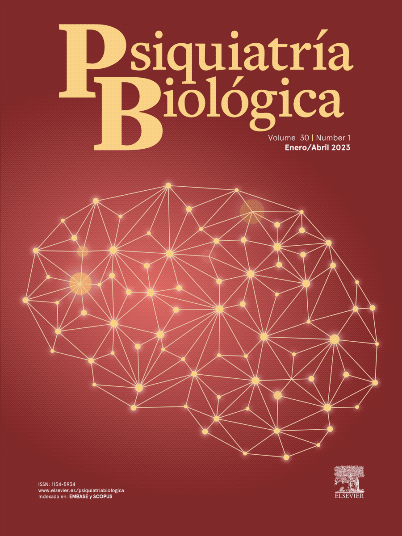IntroducciÓn: La evaluación psicométrica de los trastornos de la alimentación favorece la investigación en múltiples aspectos y complementa el abordaje terapéutico de los afectados. A partir de los datos obtenidos a través de la aplicación de un protocolo de investigación, se describe el perfil de los usuarios atendidos dentro de un Programa de Atención Específica a los Trastornos de Conducta Alimentaria (TCA).
Material y métodos: Se estudian los 96 pacientes recibidos durante el primer año. Para ello se utilizan diversos instrumentos auto y heteroaplicados: ICG; EEAG; motivación/concienciación del paciente; SCL-90; sucesos vitales; EAT; EDI-II; salud percibida, y calidad de vida. Al año de la inclusión de los pacientes en el programa de tratamiento, se valora la evolución observada.
Resultados: Los pacientes recibidos muestran un perfil clínico correspondiente a: sujetos jóvenes, con antecedentes de cronicidad, con alta psicopatología, con comorbilidad psiquiátrica y con grave alteración en todas las áreas que supone la conducta alimentaria.
Conclusiones: En torno a los TCA se encierran otros trastornos y enfermedades psiquiátricas que hacen indispensable la delimitación diagnóstica médica precisa y la atención psiquiátrica a la psicopatología y comorbilidad. La etapa de proceso de cambio de los pacientes con TCA y la relación existente con el tratamiento indican que ésta es una cuestión específica en que debe trabajarse desde el primer momento. Se justifica la creación de programas específicos para atender estos trastornos.
Objective: The psychometric evaluation of eating disorders helps the research in some different aspects and complement the treatment care of the patients. From data obtained through the aplication of a research protocol, we describe the profile of the users that were attended within an specific attention programme for eating disorders
Material and methods: We studied the 96 patients who came during the first year of the programme with different self and hetero-administered questionnaires: CGI, GAS, scale of motivation, SCL-90, life events, EAT, EDI-II, perceived health and quality of life. After one year of admission in the treatment programme, we assessed the observed evolution.
Results: The patients showed a clinic profile corresponding with: young people, with chronicity, increased psychopathology, psychiatric morbidity and serious disturbances of all eating behavior areas.
Conclusions: Within eating disorders there are other psychiatric disorders that make essential the medical diagnostic delimitation and psychiatric attention to the psychopathology and comorbidity. The stage of the process of change of patients with eating disorders and the relationship that exists between this stage and the treatment, shows that it is a specific issue to work since the first moment. These findings justify to create specific programmes to attend this kind of disorders.






